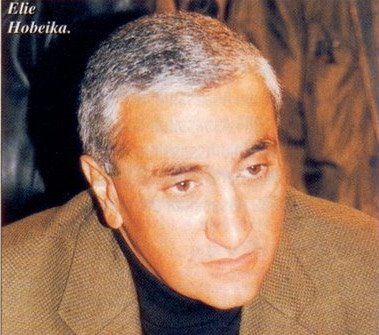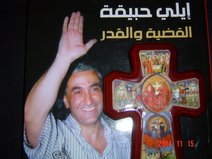
| Can the U.S. beat Israel at its game? By Jeff Gates May 7, 2010, NO Jeff, they are both complicit like siamese twins..... | |
Americans can now see the light at the end of a long dark tunnel -- if only they will look.
We entered this tunnel in 1948 when an enclave of religious fanatics induced President Harry Truman to portray them as a “state” meriting recognition, aid and protection.
We were warned not to do so.
These extremists had just inflicted on the Palestinians an ethnic cleansing that rivaled in its savagery the fascist abuse of ethnic groups during WWII. In December 1948, Albert Einstein and 27 other concerned Jews urged us “not to support this latest manifestation of fascism.”
Our failure to heed that warning led to the current morass in which we find ourselves.
Einstein and his colleagues foresaw that a “Leader State” was the goal of the “terrorist party” that has led Israel over all but a few of the 62 years since Truman’s fateful decision.
The latest Likud Party coalition ranks among the worst in the consistency of its duplicity and the blatant manipulation of its loyal ally, the American people. By our unbreakable bond with this abusive enclave, the U.S. appears guilty by association, making us a target of those abused.
From the outset, deceit was the foundation on which this ill-fated alliance was built. To betray, one must befriend. To defraud, one must first create a relationship of trust. Therein lies the basis of the “special relationship” through which Tel Aviv pursued, though us, its expansionist agenda.
To deceive in plain sight requires a capacity for what national security specialists know as game theory. In 2005, Israeli mathematician and game theory specialist Robert J. Aumann received the Nobel Prize in Economic Science. Co-founder of the Center for Rationality at Hebrew University, this Jerusalem resident candidly concedes “the entire school of thought that we have developed here in Israel” has turned “Israel into the leading authority in this field.” He’s correct.
Israeli strategists deploy mathematical models to anticipate reactions to staged provocations and manipulated crises. By applying game theory algorithms, those reactions (and reactions to those reactions), behavior becomes foreseeable -- within an acceptable range of probabilities.
While the future is never certain, the effects of a well-planned provocation become “probabilistic.” This blend of duplicity and game theory expertise makes Israel a perilous partner and an outright imposter when portrayed as a credible partner for peace in the Middle East.
For game theory war-planners, peace is not the point. For the agent provocateur in pursuit of an undisclosed agenda, the anticipated reaction is the goal. Aumann practices his craft not at the Center for Morality, Justice or Fairness but at the Center for Rationality. Peace would preclude the expansion of Greater Israel, an irrational outcome to be avoided -- at any cost.
Waging war by way of deception
From a game theory perspective, Palestinian abuse has little to do with the Palestinians. From the Israeli point of view, their mistreatment is all about how best to provoke reactions that can be foreseen -- within a acceptable range of probabilities. For those who view themselves as Chosen and above the law, such abuse is their God-given right. To behave otherwise would be irrational.
Well-planned provocations have long been Tel Aviv’s core competence. For a skilled agent provocateur, an anticipated reaction can become a powerful weapon in the arsenal of the provocateur. In response to a mass murder on American soil, even a moderately competent game theorist could foresee that the U.S. would dispatch its military to avenge that attack.
With phony intelligence “fixed” around a preset goal, a game-theory algorithm could predict that our military could be redirected to invade Iraq, a nation that played no role in the attack. Therein lies the game theory-enabled treachery imbedded at the core of this duplicitous relationship.
Happily, our national security apparatus now comprehends the “how” of this non-transparent treason. Concern at its common source is rampant in senior military ranks. Israel and pro-Israelis have been confirmed as those who fixed the intelligence that took us to war on false pretenses.
Those “in the know” now grasp that Truman’s recognition of this enclave was part of a multi-decade fraud that remains ongoing as Israel seeks to induce us into Iran and even Pakistan.
No one likes to be played for the fool. Yet that’s how Israel treated all those it befriended. That includes not only other nations but also those in the broader faith communities deceived to believe they share an identity of interest with this “latest manifestation of fascism.”
Intelligence agencies are fast coming to recognize the shared mindset of those who prey on the goodwill and trust of others. Their distrust of the U.S. is now morphing into sympathy and pity.
Misplaced Sympathy
Those adept at marketing serial Evildoers are the agent provocateur source of the very terror from which they claim a need for protection. What now needs protection are those who continue to believe -- despite the facts -- that this “state” is owed the status granted to other nations.
Light is now seeping into the geopolitical crevices where this deception has long operated in the dark. The consistency of Israeli behavior over six decades has left the rule of law with but one choice: acknowledge the fraud and withdraw Israel’s standing as a legitimate nation state.
Just prior to extending recognition, Harry Truman was assured by Zionist leader Chaim Weizmann that Israel would become a democracy and not what he feared: a theocratic and racist state. We now know that even its very founding was a fraud on America’s leaders.
Given every opportunity to conduct its affairs consistent with international law and standards of human decency, this extremist enclave chose another course. As both an enabler and a target of these religious extremists, the U.S. has a special obligation to take the lead in withdrawing recognition and securing the nuclear arsenal now under Israeli control.
Further delay only heightens the probability of another agent provocateur operation on a scale of 9/11 -- doubtless featuring yet another evidentiary trail that points to “Islamo” fascists. With more than 80 percent of the U.S. Congress declaring an “unbreakable bond” with Israel, Americans face a perilous future in which we need help from other nations to pressure our leaders to act promptly.
We were warned more than six decades ago. Now is the time to heed that warning.
Jeff Gates is author of Guilt By Association, Democracy at Risk and The Ownership Solution. See www.criminalstate.com.







